By the time I got outside the bus had already left教案(通用3篇)
By the time I got outside the bus had already left教案 篇1
unit 9 by the time i got outside, the bus had already left.
the seventh period
reading: changing english
ⅰ. teaching aims and demands
1. knowledge objects
key vocabulary
quarter, normal, traffic light, competition, significant, position and so on.
2. ability objects
train students’ ability of identify main idea.
train students’ ability of understanding words in context.
train students’ ability of reading for special information.
3. moral object
if you can speak both good english and your native language, it may help you get more chances in searching jobs.
ⅱ. teaching key points key vocabulary
read the text to identify main idea.
read the text to understand words in context.
read the text for special information.
ⅲ. teaching difficult points
train students’ reading skill.
ⅳ. teaching methods
1. up-down reading methods.
2. pairwork.
3. groupwork.
ⅴ. teaching aid
a projector.
ⅵ. teaching procedures
step i key vocabulary
this activity introduces the key vocabulary words.
show the following vocabulary on the screen by a projector.
quarter n.四分之一
population n. 人口
native adj. 本国的;本地的
speaker n. 说话者;演讲者
wherever adv.无论哪里
singaporean n. 新加坡人 adj. 新加坡人的;新加坡的
india n. 印度
hindi n. 印地语;印地人 adj. 印度北部的
german n. 德语;德国(人)的
invention n. 发明;创造
business n.生意;商业
say the words and have students repeat several times until they can pronounce them fluently and accurately.
step ⅱ part 1
this activity is designed to activate students’ background knowledge before attempting the reading.
read the title changing english to the class. ask, what do you think the article is about?
read the instructions to the class.
point to the three questions in the box.
say, you are to discuss the questions about english with your partner. but don’t look at the reading. use your background knowledge instead.
get students to complete the task in pairs. as the pairs work together, walk around the room. ensure that they are discussing the questions in english.
when most students are finished, invite pairs of students to report their results.
don’t say yes or no to their answers.
step ⅲ part 2
this activity provides practice in scanning for specific information.
look at the picture. ask students to describe what is happening in the picture.
read the instructions and draw students’ attention to the list of numbers. get a student to say the sample answer like this: in 1950 english started being more popular for science.
please read through the article silently.
find information for the numbers. remember to skim for the key ideas rather than read slowly. get students to work on their own. as they are doing this, move around the classroom answering questions they may have and offering language support as needed.
check the answers.
answers
1950—in this year english started being more popular for science.
10 000—number of words in the south african dictionary not found elsewhere in the world.
a hundred—number of years ago that
german was the most popular language for science.
one billion—number of people learning english.
375 million--the number of native speakers of english.
step ⅳ part 3
this activity encourages students to use the strategy of reading in context.
ask students to read the article once.
say, pay attention to the bold word and expressions? and note any other word or sentence you don’t understand. read in context, guessings their meanings from the other words around them.
a few minutes later, ask different students to say the meanings of the words and expressions indicated in bold by guess. don’t give them the correct answers. let students look at the words and expressions and their meanings in the box. point out the sample answer. then ask students to match the correct meanings with the correct words and expressions. allow them one or two minutes to do this.
check the answers.
answers
quarter d, normal a, traffic light e, competition f, significant b, position c
get students to make sentences with the words and expressions. remind them to look at the article again for extra help.
answers to this activity will vary. ask a student to write his/her answers on the blackboard.
sample answers
1. a quarter of students in my class are girls.
2. i hope the situation will soon return to normal.
3. when the traffic lights are red, you must stop.
4. he took part in a swimming competition.
5. listening, speaking, reading and writing are four significant skills in learning english.
6. she is fit for the position.
step ⅴ part 4
this activity helps students read for specific information.
read the instructions to the class. call students’ attention to the chart. ask a student to read the five sentences to the class. say, you are to read the article again and decide if these sentences are true or false. and correct the false sentences.
give students a sample answer to the first sentence.
t: do you think the first sentence is true or false?
ss: false.
t: why is it false?
ss: because egyptians say welcome to egypt.
get students to do the activity on their own. as students work, move around the room answering any questions they may have.
check the answers. ask different students to give their answers. for the false sentence, have them give the correct statement.
answers
f egyptians say welcome in egypt.
f traffic lights in south africa are called robots.
t
t
f hinglish of chinese and english is called chinglish.
step ⅵ part 5
this activity lets students work in groups and think critically about what they have read.
read the instructions to the class.
call students’ attention to the chart. set a time limit for students to go through all the sentences and the lettered languages.
say, the underlined words come from different languages. you are to read the sentences again and guess where these words come from or look them up in a dictionary. try to match them with the languages they come from.
give students a sample answer to the first sentence (the word mattress comes from arabic.)
get students to do the activity in groups of four. as the groups work together, walk around the room checking progress and offering help as needed.
check the answers.
answers
mattress a. arabic
pajamas d. hindi
mosquitoes f. spanish
snorkel e. german
yoghurt b. turkish
bazaar c. persian
chauffeurs h. french
soprano g. italian
culture note
most people who speak english as a native language don’t have the same grammatical background as people who study english as a second language.
however, what a person who was born speaking english knows is whether or not things sound "right". he or she might not be able to explain the reason, but will usually have a good sense of how english should be used. because english is a language made up from many different languages with a lot of odd rules, a learner should be a bit flexible and understand that some rules are made to be broken.
stepⅶ summary
in this class, we’ve done much reading and writing practice. and it improves our reading comprehension ability.
step ⅷ homework
ask students to collect some more words used in english along with the different languages they come from.
step ⅸ blackboard design
reading: changing english
the seventh period
samples answers to activity 3
1. a quarter of students in my class are girls.
2. i hope the situation will soon return to normal.
3. when the traffic lights are red, you must stop.
4. he took part in a swimming competition.
5. listening, speaking, reading and writing are four significant skills in learning english.
6. she is fit for the position.
By the time I got outside the bus had already left教案 篇2
unit6-5 by the time i got outside,the bus had already left. selfcheck
ⅰ.teaching aims and demands
1.knowledge objects
(1) verbs: rush, realize, invite, show up, stay up.
(2) write an article according to the pictures given.
(3) vocabulary:homework, look, costume, empty
2.ability objects
(1) train the students to use these verbs correctly:
rush, realize, invite, show up, stay up.
(2) train the students writing skill.
ⅱ.teaching key points
1.help the students have a self check on the key words and target language of this unit.
2.practise using these verbs: rush, realize, invite, show up, stay up.
3.review the new vocabulary introduced in this unit: homework, lock, costume, empty.
4.direct the students to write an article according to the pictures given.
ⅲ.teaching difficult points
1.help the students make sentences with the verbs.
2.direct the students to write an article with the pictures given.
ⅳ.teaching methods
1.teaching by providing sample sentences.
2.teaching by describing the pictures.
ⅴ.teaching aid: just the blackboard.
ⅵ.teaching procedures
step ⅰ revision
1.revise the contents in the three articles in activity 3a on page 72 by asking the question below
questions:
(1) what did a radio program announce in 1938?
(2) what had happened by the time the authorities revealed the story was a hoax?
(3) what did a reporter announce on april fool's day?
(4) what had happened by the time people realized that the story was a hoax?
(5) what did a famous tv star once do on april fool's day?
(6) what was the ending of the last story?
2.ask three different students to read the articles.
3.dictate the following words:announce, convince, panic, authority, reveal, spaghetti, describe, hoax, thrill, flee/fled/fled.
step ⅱ
part 1this activity focuses on vocabulary introduced in the unit. focus attention on the box. invite a student to read the vocabulary words at the top.you are asked to fill in the blanks with the words. in some cases, you may need to use another form of the word, for example, adjusting for tense or subject/verb agreement.ask students to fill in the blanks on their own. check the answers. five students each reads a sentence, filling in the blanks. the rest of the students check their work.
answers:1.realized 2.rush 3.stay up 4.invite 5.show up
suggested answers:
1.as soon as the bell rang, the students rushed to the playground.
2.by the time he got to the office he realized that he had locked all his
keys at home.
3.mr. green invited his good friends to have a big dinner at home last
sunday.
4.we have to finish the task before the boss shows up.
5.jack stayed up very late last night. he couldn't wake up on time this
morning.
step ⅲ part 2
ask: what is happening to ming? get the whole class to read the instructions. then ask the students to describe each picture in order. write some useful sentences on the blackboard. for example, for the first picture, help the students to say ming wakes up at 10: 00 and thinks she is late for school.the sentences can vary. a sample answer:ming woke up at 10; 00 o'clock in the morning. she thought that she must be late for school. so she got up and rode a bike to school was empty. she was the only one there. then she realized that it was sunday.her good friend, han mei, came to see her after she had got home. ming told han mei the whole story happened in the morning earlier. it made han mei laugh a lot.ming went to her grandparents' house with her parents. they had dinner together and talked happily. ming watched tv in the evening and she went to bed at 10 : 00.
step ⅳ part 3the first one has been given as a model. ask some students to tell their answers to the class. check the answers with the whole class.
answers: 1.homework 2.lock 3.costume 4.empty
step ⅴ just for fun!
ask the students to read the sentences under the pictures together.then ask the children what is funny about this cartoon. help the students to answer like this:
the boy saw the clouds and he felt the rain long before he got home. he should have realized much sooner that he had forgotten his umbrella.
step ⅵ summary:in this class, we've practiced using some verbs and we've written an article based on the pictures given.
step ⅶ homework
1.revise all the language points in this unit.
2.make another more sentence with each verb below, rush, realize, invite, show up, stay up.
教后反思:
主备人:刘华 备课时间:.10.27 上课人: 上课时间:
审阅人: 审阅时间: 课 型:new 教案序号:
review of units1-6
teaching aims:
1.review the vocabulary of units1-6.
2.review the grammar of units1-6
step1 1a.draw students’ attention to the sample answer.check that they understand what they need to do by having one or two students complete other answers.ask students to do the crossword individually or in pairs.check the answers.ask different students to read out and spell the answers.
step2 1b.explain to students that they need to write clues like the clues for the crossword in activity 1.draw students’attention to the example.write a few words on the board and ask the class to suggest clues.
step3 2a.say,this picture matches the first conversation you wil hear.now listen to the tape and match the other conversations to the correct pictures.students listen and write the numbers in the boxes next to the pictures.
step4 2b.explain to students that they need to listen for information in the dialogues that will help them answer the questions.have students do the activity in pairs.as they work,move around the classroom listening and offering help where necessary.
step5 2c.have two students model the sample dialog.ask students to practice their conversations.ask them to share their conversations with the class.
step6 finish activity3-7 individually.ask them about unusual situations where they had to make difficult decisions.encourage them to talk about situations different from those in the task.ask them to work in groups of three.do alarge survey with the class.
sample answers:
1.a man on a horse or a map of islands
2.a vase or two faces
3.an old woman looking down and a young woman looking away
tell them to look at pictures and diss with their partners what they look like,then share their answers as conversations with the class.
教后反思:
unit6-5 selfcheck 达标训练
i.单项选择
1.the woman_____ the child quickly and took him to hospital.
a. put on b dressed c. had on d. was wearing
2. ______ weather is!
a. what a fine b. how fine c. what fine d. how fine the
3. who was the first one____?
a.to reach b. to arrive c. to get to d. to arrive at
4.______ books must produced for the children.
a.many thousand b.many thousands of c. many thousand of d. many thousand
5. we want to play basketball after school. would you like to _____us?
a. invite b. play c. get d. join
6. by the time i walked into the class, the teacher had started teaching already.(改为同义句)
the teacher____ _____ his class already before i _______ class.
7. linda said to me, “ i bought a new bike.” (改为宾语从句)
linda told me that ____ ____ _____ a new bike.
8. the play began at 8:00. we arrived the minutes late. (合并句子)
the play _____ ____ ____ _____ten minutes late when we arrived.
9. i can’t decided whether i would go or not. (改为简单句)
i can’t decided whether ___ ___or not.
10. he had left by the time i came back, ______ ___?(完成反义疑问句)
ii.make sentences.
1. 你明天要上学, 我不想让你熬夜。
2. 我们的时间很多, 用不着太急促。
3.我一看到他,就觉得不太对劲。
4.你接到参加玛丽生日聚会的邀请了吗?
5.在灯光下,妈妈脸上的皱纹清晰可见。
我的收获:
review of units1-6达标训练
一. 知识点讲解
1. he is worried about his exam.他很担心他的考试。
be worried about=worry about为……担心
我不担心我的考试。_________________________________________
=_________________________________________
2. we should al try to take care of our planet.
我们应该尽力保护好我们的行星。
take care of=_________________=______________________
3. is it neighbor?是邻居吗?
neighbor指人,而neighborhood则指附近地区,也可以指附近地区的人。
4. i’d give it to the police.我会把它交给警察。
police是名词,通常用作the police,视为复数名词,意思是“警方,警察”。如果指一个警察,要用a policeman或a policewoman表示。
二. 根据句意及首字母完成单词
1. k________are from australia.their back legs are longer than the front ones.
2. listening to music is very relaxing.it makes people feel r___________.
3. the river is about 4,000 f___________long.
4. he has to work 12 hours a day to r__________money for his son’s education.
5. the discarded paper can be used by r______________.
6. we should e__________children to be polite to others.
7. thanks for c__________for my dog.
8. the boy won an a____________because of his excellent performance.
9. the company can p___________us with 500 dollars a month.
10. yang liwei is an i____________to all the chinese people.
三. 用所给单词的适当形式填空
1. volunteering is both interesting and______________(educate).
2. did you have fun___________(play)football?
3. it takes him ten minutes________(walk) to school every day.
4. you mustn’t forget__________(bring)your books here tomorrow.
5. i don’t know what___________(do) next.
6. he was surprised_____________(see)me at the party.
7. so far,man____________(travel)farther than the moon.
8. we should speak to the old_____________(polite).
9. ___________(thousand)of trees were planted last year.
10. i’m looking forward to_______________(visit) england.
我的收获:
By the time I got outside the bus had already left教案 篇3
unit 10 by the time i got outside, the bus had already left.
一. 教学内容:
unit 10 by the time i got outside, the bus had already left.
【学习目标】
1. 通过本单元的学习,掌握过去完成时态的用法,特别是与一般过去时态和现在完成时态的区别。
2. 合理安排自己的学习和生活,守时守信。
二、教学重点难点:
过去完成时态的用法及本模块中的一些重点短语
三、重点词和短语
1. by the time 到……时候
2. get dressed 穿衣服
3. run all the way to school 一路跑向学校
4. leave +物+地点 把某物落在某地
【即学即用】
he his umbrella in the train.
a. leave b. left c. forgot d. forget
5. no wonder 难怪
6. run back to school 跑回学校
7. start doing / to do 开始做某事
8. go off 发出响声
【即学即用】
in the morning, i didn’t hear my alarm clock .
a. going off b. went off c. go off d. to go off
9. wait for sb. to do sth. 等待某人做某事
10. run off / away 跑掉 离开
11. unfortunately 不幸地
luckily 幸运地
【即学即用】
, he didn’t pass the english exam again.
a. luckily b. fortunately c. unfortunately d. unfortunate
12. on time 准时
in time 及时
【即学即用】
people to the meeting all arrived here .
a. in time b. on time c. after time d. for time
13. give sb a ride 让某人搭便车
【即学即用】
he walked me and asked where i was going and told me that they offered to .
a. by; give me a ride b. off; give me rides
c. by; give me some feet d. through; give me a walking make it
14. break down 出故障
【即学即用】
my bike on my way to school, so i had to walk there.
a. broke out b. broke in c. broke down d. broke away
15. show up 出席;露面
【即学即用】
he didn’t until supper was nearly over.
a. show off b. show up c. show round d. show in
16. stay up late 熬夜到很晚
stay up all night studying 熬夜学习
17. costume party 化妆舞会
18. happen to sb 某人发生了什么事
happen to do 碰巧做某事
19. set off 激起
set off=set out 出发/起程
【即学即用】
his action a heated argument.
a. set out b. set up c. set off d. set free
20. across the whole country 遍及整个城市
21. thousands of 成千上万
22. flee-fled-fled 逃离
flee from + 地点 从某地逃离
flee away 逃离/逃跑
23. sell out 卖光
24. marry sb=get/be married to sb 和某人结婚
四、重点、难点、考点及疑点注释
1. i started walking, but i knew i couldn’t get to school on time. 我开始步行,但我知道我已经不能按时到达学校了。(section a, 3a)
(1)start to do sth.和start doing sth都表示“开始做某事”,常可相互替换。
at the age of 12, he started writing his own newspaper.
= at the age of 12, he started to write his own newspaper.
他十二岁时,开始编写自己的报纸。
(2)on time在本句中意为“准时,按规定的时间不早也不迟”。
li ming’s father seldom goes work on time. 李明的父亲很少准时上班。
the party began on time that evening. 晚会在那天晚上准时举行。
知识拓展:
time表示“……次/倍”时,是可数名词,其复数形式为times。
how many times did you see the movie? 那部电影你看了几遍?
i have four times as many books as you.我的书是你的4倍。
特别提示:
in time意为“及时”。
i will try my best to finish it in time. 我会尽力及时完成。
will you be home in time to see the children before they go to bed?
你来得及在孩子们上床睡觉之前赶回家看看他们吗?
短语链接:
all the time始终、总是, at any time在任何时候, at the same time同时, from time to time偶尔, have a good/bad time过得快乐/不快乐, in no time立刻, many a time屡次, at times有时, take one’s time慢慢来/别着急, the times《泰晤士报》(英国一大报), two times three 2乘以3
2. when i got to school, the final bell was ringing. i only just made it to my class. 我到学校的时候,上课铃正在响。我刚好正点赶到教室上课。(section a, 3a)
(1) final bell在此处作“上课铃”解,有时也写为second bell,而“预备铃”则表示为first bell。
(2) made it在这里表示“到达、赶上”的意思。
you can make it if you hurry. 如果你快一点的话,就会按时赶到的。
3. welles was so convincing that hundreds of people believed the story, and panic set off across the whole country. welles的话是如此具有说服力,以至于成百上千人相信了他的话,全国处于一片恐慌之中。(section b, 3a)
(1)so...that在这里引导结果状语从句,表示“如此……以至于……”,so强调形容词或副词,that后面接从句,常用于下面的结构中:
例如:
the computer is so useful that each of us wants to buy one.
计算机太有用了,我们每个人都想买一台。
he ran so fast that we couldn’t catch up with him. 他跑得太快,我们追不上他。
he had so many falls that he could ride a bike at last.
他摔了很多跤,终于学会了骑车。
there’s so much noise in the meeting room that i can’t hear the speaker clearly.
会议室里的噪音太大,我听不清演讲者的发言。
知识拓展:
so...that句型转换的四种方法:
◎当从句的主语与主句中的主语一致,且that从句是否定式时,常用too...to...转换。
the little girl was so tired that she couldn’t walk farther.
=the little girl was too tired to walk farther.
这个小女孩太累了,她不能再走更远的路了。
◎当从句的主语与主句中的主语不一致,且that从句是否定式时,常用too...for sb to do sth转换。
the work is so difficult that we can’t finish it in time.
=the work is too difficult for us to finish it in time.
这份工作太难了,我们不能按时完成。
◎当从句的主语与主句中的主语一致,且that从句是肯定式时,常用...enough to do sth转换。
he is so strong that he can lift the heavy box.
=he is strong enough to lift the heavy box.他强壮得足以举起那个重箱子。
◎当从句的主语与主句中的主语不一致,且that从句是肯定式时,常用...enough for sb to do sth转换。
he spoke so clearly that i could hear him.
=he spoke clearly enough for me to hear him.他说得很清楚,我能听明白。
特别提示:
so that连在一起使用,意为“为了,以便”,表示目的,此时主句和从句的主语不一定一致;另外,还可以引导结果状语从句,前面一般用逗号。
speak louder so that we can hear you. 你说大声点儿,以便我们能听得见。
she was ill, so that she was unable to go with you. 她病了,不能和你一起去了。
相关链接:
such也表示“如此……以至于……”,但such强调名词,常用于下面的结构中:
例如:
he is such a little boy that i can’t believe him.
= he is so little a boy that i can’t believe him.
他是如此小的一个孩子,以至于我不能相信他说的话。
it was such bad weather that we had to stay at home. 天气如此恶劣我们只好呆在家里。
【即学即用】
⑴—jack, you look tired today. what’s wrong?
—i was busy i didn’t go to bed until midnight yesterday.
a. too; to b. enough; to c. so; that d. such; that
⑵it’s that we had to stay at home all day.
a. such hot weather b. so hot weather c. such a hot weather d. so hot a weather
(2)动词短语set off在本句中是“引起、激起”的意思。
a letter from home set off an attack of homesickness.
一封家书激起了一片思乡之情。
特别提示:
set off在作“出发、动身”解时,与set out意思相同。
it was raining when we set off/out. 我们出发时,天还下着雨。
4. one april fool’s day, a reporter in england announced that there would be no more spaghetti because the spaghetti farmers in italy had stopped growing spaghetti. 一个愚人节,有位英国记者宣称以后不会再有意大利式细面条可以吃了,因为意大利的农民已经停止生产这种细面条了。(section b, 3a)
there would be是there be的过去将来时,意为“过去将有”。
知识拓展:
过去将来时由“would+动词原形”构成,表示从过去某个时间看将来要发生的动作或存在的状态,常用于宾语从句中。
the students didn’t know where they would go tomorrow.
同学们不知道明天要去哪儿。
nobody knew where he would go. 没人知道他要去哪里。
◎过去将来时也常可用“was/were+going to+动词原形”表示。
she said that she was going to speak at the meeting.她说她要在大会上发言。
li ping said that she was going to visit her aunt in the town the next sunday.
李萍说她下个星期日要去拜访住在城里的姑姑。
5. she was thrilled, because she really wanted to get married. 她很激动,因为她真的想结婚。(section b, 3a)
(1)thrilled是形容词,意为“非常激动的、非常兴奋的”,常用来说明一个人的心情。
he was thrilled when he heard the news. 他听到这个消息时很激动。
she was thrilled and shy when she heard “i love you” from her boy friend.
当她听到她男朋友说“我爱你”的时候,她很激动也很害羞。
(2)get married是固定短语,意为“结婚”,表示动作;而be married表示状态,意为“结婚了”,这两个短语都可以和介词to连用。
she’s married to my brother. 她嫁给了我哥哥。
they’re saving up to get married. 他们储钱准备结婚。
魔力纠错:
他和我的一个朋友结了婚。
误:he was married with a friend of mine.
正:he was married to a friend of mine.
魔力解析:
当表示“与……结婚”时,marry用作及物动词,其后接介词to,而不能用with。
特别提示
marry是短暂性动词,当表示“结婚多长时间”时,要用be married。
lucy married robert two years ago.
= lucy has been married to robert for two years. 露茜和罗伯特结婚两年了。
知识拓展:
◎问某人“婚否”时应说are you married?或is he married?等;如果“未婚”,可以说i’m single.。
◎问某人“何时结的婚”应说when were you married?或when did you get married?。
【即学即用】
⑴—when did you ?
—i’ve for two months.
a. get married; been married b. be married; been married
c. get married; got married d. get married; married
⑵his daughter is going to be married an engineer.
a. with b. for c. to d. /
五、语法:
“过去完成时”闯关
★过去完成时表示在过去某一时间或动作之前已经完成的动作,它表示动作发生的时间是“过去的过去”,它是一种相对的时态,即其相对于一般过去时,没有一般过去时就没有过去完成时,如图解:
★过去完成时由“助动词had(had用于各种人称)+ 动词的过去分词”构成
【第1关】用动词的正确时态填空:
by the time he was ten, he (set) up a lab of his own.
【融会贯通】表示过去某一时间或动作以前已经完成的动作,可以用by, before, by the end of等介词短语或by the time引导一个时间状语从句来表示。应填写:had set。
又如:i had seen you before you saw me. 在你看到我之前,我早已看到你了。
【第2关】用动词的正确时态填空:
he said she (work) in a foreign company for five years before she (become) an english teacher.
【融会贯通】在宾语从句中,主句谓语动词为一般过去时(said, asked, told),从句用过去完成时,此时从句中的动作发生在主句的动作之前。应填写:had worked; became。
又如:the teacher asked me what had happened to me.老师问我发生了什么事。
【第3关】改错:
when we got there, the movie had begun for almost twenty minutes.
【融会贯通】表示从过去某一时间开始,持续到过去某一时间的动作或状态。常与for引导的一段时间连用。
注意:此时谓语动词只能用延续性动词。所以句中had begun应改为had been on。
又如:i had worked for three hours when he called. 当他打电话时,我已经工作了三个小时了。
【第4关】用动词的正确时态填空:
paul helped me repair the bike that i (ride) for two years.
【融会贯通】在含有定语从句的主从复合句中,如果叙述的是过去的事,先发生的动作常用过去完成时。应填写:had ridden。
又如:i returned the books that i had borrowed last week. 我已经还了上周借的书。
【第5关】用动词的正确时态填空:
i didn’t get to the airport until the plane (take) off.
【融会贯通】由连词after, until引导的复合句中,如果主句谓语动词和从句谓语动词所表示的过去动作不是同时发生的,那么先发生的动作通常用过去完成时表示。应填写:had taken。
【第6关】翻译填空:
我很快冲了个澡,吃了点早饭,然后迅速向车站跑去。
i a quick shower, some breakfast, and then off to the bus stop.(见section a, 3a)
【融会贯通】区别过去完成时与一般过去时
两种时态都表示过去发生的动作或存在的状态,但使用时应注意以下几点:
1. 过去完成时在时间上强调“过去的过去”;而一般过去时只强调过去某一特定的时间,试比较:
by yesterday morning, i had called you ten times. 到昨天上午,我已经给你打了十个电话了。
i called you yesterday morning. 昨天上午我给你打的电话。
2. 当两个或两个以上的动作接连发生时,按时间顺序,只需用一般过去时。应填写:took, had, ran。
又如:she took up her schoolbag, locked the door and went to school by bike. 她拿起书包,锁上门,然后骑着自行车去上学了。
【闯关练习】
i. 下列各句中均有一处错误,找出并改正。
1. when we got there, the movie had begun for almost ten minutes.
2. he said he has finished his homework already.
3. how long was your father worked in that firm before he came here?
4. by the time you rang me, all my homework had done.
5. i met han mei yesterday. i have never met her since we left school
ii. 用所给动词的正确形式填空。
1. i thought we (meet) each other before.
2. we (learn) 3,000 words by the end of last year.
3. he told me that he (have) a cold for three days.
4. mr smith (finish) his work, so he left for home.
5. i (receive) a letter from my friend yesterday. we (not hear) from each other since .
参考答案:
i 1.begun →been on 2. has →had 3. was→ had 4. had done→ had been done 5. have →had
ii. 1. had met 2. had learned / learnt 3. had had 4. had finished 5. received; hadn’t heard
中考聚焦:
考点1. make it
—math is difficult for me. how i wish to improve it!
—don’t lose your confidence. i believe you will it if you keep trying.(湖北宜昌)
a. take b. work c. pick d. make
【要点简析】make it意为“做好;做到;做成功”或“及时到达”。选 d。
考点2. leave sth. + 地点
this morning i went to work in such a hurry that i the key in my office at home. (山东青岛)
a. forgot b. left c. missed d. lost
【要点简析】“leave sth. + 地点”表示“把某物忘在某处”。选b。
考点3. stay up
—don’t too late, or you will feel tired in class.
—i won’t, mum. (四川内江)
a. stand up b. stay up c. wake up d. get up
【要点简析】stay up 意为“熬夜;不睡觉”。 stand up意为“起立”; wake up意为“唤醒”;get up意为“起床”;选b。
考点4. 过去完成时
by the end of last year, we the work. (内蒙古乌兰察布)
a. has finished b. had finished c. have finished d. finish
【要点简析】由介词短语by the end of last year 可知,该句应用过去完成时。选b。
考点5. announce
根据汉语提示写单词:the vote was completed. the teacher (宣布)the result.(江苏苏州)
【要点简析】announce是及物动词,意为“宣布;公布;发布;通告”,其名词形式为 announcement。应填写:announced。
考点6. so… that …
she worked so quietly no one knew she was there. (浙江杭州)
a. which b. after c. as d. that
【要点简析】so… that… 如此……以至……,so后面接形容词或副词,that之后接从句。选d。


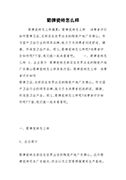
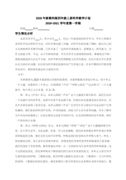
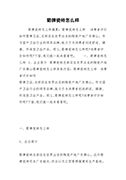
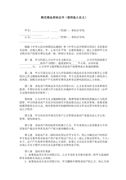
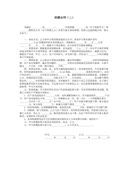
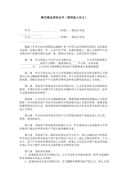












 扫一扫支付
扫一扫支付